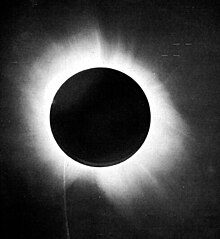In 1912, Einstein returned to Switzerland to accept a professorship at his alma mater, the ETH. Once back in Zurich, he immediately visited his old ETH classmate Marcel Grossmann, now a professor of mathematics, who introduced him to Riemannian geometry and, more generally, to differential geometry. On the recommendation of Italian mathematician Tullio Levi-Civita, Einstein began exploring the usefulness of general covariance (essentially the use of tensors) for his gravitational theory. For a while Einstein thought that there were problems with the approach, but he later returned to it and, by late 1915, had published his general theory of relativity in the form in which it is used today.[57] This theory explains gravitation as distortion of the structure of spacetime by matter, affecting the inertial motion of other matter. During World War I, the work of Central Powers scientists was available only to Central Powers academics, for national security reasons. Some of Einstein’s work did reach the United Kingdom and the United States through the efforts of the Austrian Paul Ehrenfest and physicists in the Netherlands, especially 1902 Nobel Prize-winner Hendrik Lorentz and Willem de Sitter of Leiden University. After the war ended, Einstein maintained his relationship with Leiden University, accepting a contract as an Extraordinary Professor; for ten years, from 1920 to 1930, he travelled to Holland regularly to lecture.[58]
In 1917, several astronomers accepted Einstein ’s 1911 challenge from Prague. The Mount Wilson Observatory in California, U.S., published a solar spectroscopic analysis that showed no gravitational redshift.[59] In 1918, the Lick Observatory, also in California, announced that it too had disproved Einstein’s prediction, although its findings were not published.[60]

However, in May 1919, a team led by the British astronomer Arthur Stanley Eddington claimed to have confirmed Einstein’s prediction of gravitational deflection of starlight by the Sun while photographing a solar eclipse with dual expeditions in Sobral, northern Brazil, and Príncipe, a west African island.[56] Nobel laureate Max Born praised general relativity as the "greatest feat of human thinking about nature";[62] fellow laureate Paul Dirac was quoted saying it was "probably the greatest scientific discovery ever made".[63] The international media guaranteed Einstein’s global renown.
There have been claims that scrutiny of the specific photographs taken on the Eddington expedition showed the experimental uncertainty to be comparable to the same magnitude as the effect Eddington claimed to have demonstrated, and that a 1962 British expedition concluded that the method was inherently unreliable.[61] The deflection of light during a solar eclipse was confirmed by later, more accurate observations.[64] Some resented the newcomer’s fame, notably among some German physicists, who later started the Deutsche Physik (German Physics) movement


0 comments:
Post a Comment